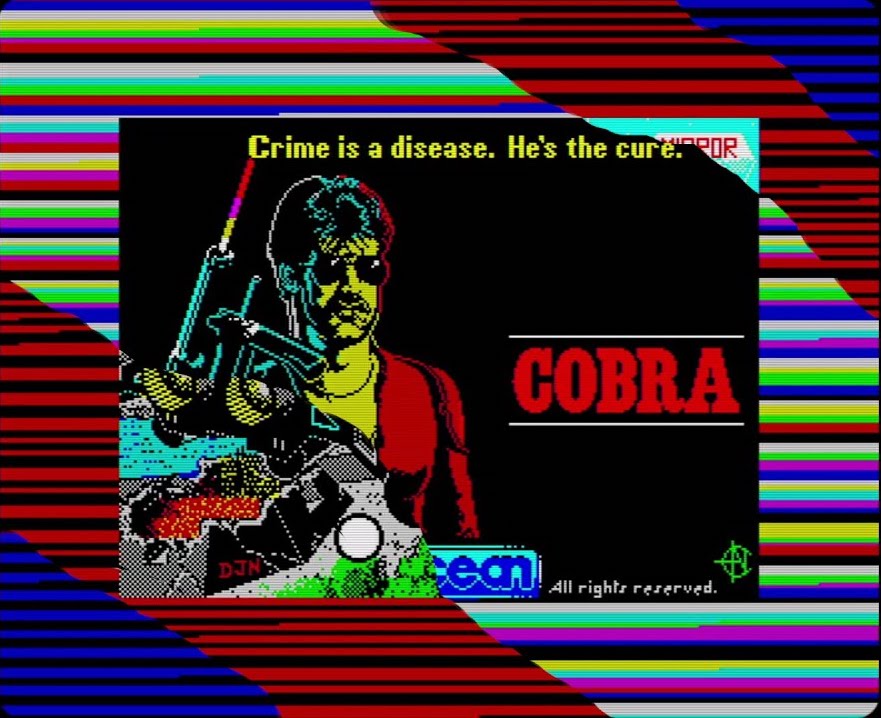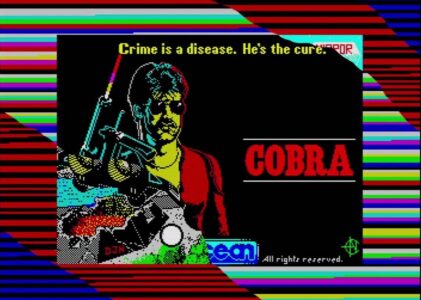Introduction
In the heyday of the ZX Spectrum, loading a game was a ritualistic experience that required patience and a touch of wizardry. Long before the era of high-speed internet downloads and flashy graphics, gamers relied on audio cassette tapes to bring their favorite titles to life. In this article, we will embark on a nostalgic journey to uncover the intricate loading process of ZX Spectrum games through audio cassette tapes.
The ZX Spectrum: A Gaming Icon
Before delving into the loading process, let’s take a moment to appreciate the ZX Spectrum itself. Released by Sinclair Research in 1982, the ZX Spectrum quickly became an iconic piece of hardware. It boasted a humble 8-bit processor, a mere 16K of RAM in its basic configuration, and a distinctive rubber keyboard that many gamers fondly remember. Despite its modest specifications, the ZX Spectrum became a platform for some of the most beloved and enduring games in the history of gaming.
Magnetic Magic: How Audio Cassette Tapes Worked
To understand the loading process of ZX Spectrum games, it’s essential to grasp the technology behind audio cassette tapes. Unlike modern digital media, cassette tapes stored data in analog form through the magnetization of a thin strip of plastic-coated tape. When you recorded or played back audio on a cassette tape, a magnetic head read the variations in magnetization on the tape, translating them into sound.
The ingenious part of using cassette tapes for data storage was that it could store both audio and digital data on the same tape. This dual-purpose nature was leveraged to deliver games to eager Spectrum users.
Game Data on Cassette Tapes
ZX Spectrum games were distributed on cassette tapes as audio signals. These audio signals were essentially analog representations of digital data. When you inserted a game cassette into your Spectrum’s tape deck, the loading process began.
Header Information
Every cassette tape containing a Spectrum game started with a header block. This header block was a crucial piece of the puzzle, as it contained vital information about the game, such as its name, loading instructions, and often, a flashy loading screen with colorful graphics.
The header block was also used to initialize the Spectrum’s loading routine. It instructed the computer on how to interpret the incoming audio signals and where to store the data in memory once it was loaded. Without this header, the game would be unintelligible to the Spectrum.
Data Encoding
The actual game data followed the header block. This data was encoded into audio signals using a method known as Frequency Shift Keying (FSK). In FSK encoding, two distinct audio frequencies represented binary values: one frequency for “0” and another for “1.” By modulating between these frequencies, the Spectrum could interpret the data stream.
The FSK encoding allowed for a reliable and error-tolerant data transfer over the sometimes noisy medium of cassette tapes. It was a clever choice considering the limitations of the technology at the time.
Loading Speeds and Tones
One of the defining aspects of loading games from cassette tapes on the ZX Spectrum was the distinctive screeching and chirping sounds that emanated from the computer’s built-in speaker during the loading process. These sounds were not random but were specific audio tones used to represent different types of data.
For example, a high-pitched tone might indicate the start of a new block of data, while a low-pitched tone could signal the end of a block. These tones were essential for synchronization and error checking during the loading process.
Turbosound and Multiload
As the Spectrum evolved, so did loading techniques. Turbo loaders, such as the popular “Turbosound,” emerged to speed up the loading process. These loaders employed more advanced encoding schemes and optimized routines to reduce the agonizingly long loading times that Spectrum users had grown accustomed to.
Multiload games, which were larger and more complex, used multiple tapes or sides of a single tape to store the vast amount of data required. These games often featured in-game prompts instructing the player to flip the tape or change sides to continue the loading process.
The Loading Ritual
Loading a ZX Spectrum game from an audio cassette tape was a ritual that many gamers of that era cherished. Here’s a step-by-step guide to how this process worked:
1. Prepare the Cassette Tape
Before anything else, you needed to locate the cassette tape containing the game you wanted to play. These tapes often featured colorful artwork and labels that were a feast for the eyes. Insert the cassette into the tape deck of your ZX Spectrum.
2. Boot Up the Spectrum
Turn on your ZX Spectrum computer, ensuring that it was in working order. The familiar startup screen would greet you, and you would often hear the distinctive “R Tape loading error, 0:1” message, which indicated that the Spectrum was ready to receive data from the tape.
3. Begin the Loading Process
Press the play button on the cassette deck and watch the tape counter start to roll. As the tape played, the Spectrum’s built-in speaker would emit a cacophony of tones and screeches, creating a symphony of anticipation.
4. The Loading Screen
As the header block of the cassette loaded, you would often be treated to a loading screen that showcased the game’s title and graphics. This screen served both as eye candy and as a distraction from the often lengthy loading times.
5. Patience and Timing
The loading process could take several minutes, depending on the size of the game. During this time, it was essential to remain patient and vigilant. Occasionally, the loading process could be disrupted by interference or errors in the audio signal. In such cases, you might have to rewind the tape and start again.
6. Success!
When the loading process completed without errors, the Spectrum would display a message like “Ready.” You were now ready to dive into the world of the game you had patiently waited for. Press the appropriate key or follow on-screen instructions to start playing.
The Joys and Frustrations of Cassette Loading
Loading games from cassette tapes had its share of joys and frustrations. Let’s explore some of the aspects that made it a memorable experience for Spectrum users.
The Joy of Discovery
One of the joys of cassette loading was the sense of anticipation it created. Watching the loading screen and hearing the distinctive sounds built excitement and anticipation for the gaming experience to come. It was like waiting for a curtain to rise on a stage performance.
The Pain of Loading Errors
Not everything was smooth sailing when it came to cassette loading. Loading errors were a common source of frustration. A slight interruption in the audio signal, a speck of dust on the tape head, or a minor glitch could result in a loading failure. This meant rewinding the tape, adjusting the volume, or even cleaning the tape head with a cotton swab, all while hoping for a successful load on the next attempt.
The Nostalgia Factor
For those who grew up with ZX Spectrum games, the loading process is a source of nostalgia. The distinctive sounds of loading and the unique loading screens are etched in the memories of many gamers from that era. It’s a reminder of simpler times when gaming was a more tactile and tangible experience.
The Satisfaction of Success
When a game successfully loaded after minutes of anticipation, there was a sense of satisfaction and accomplishment. It was as if you had overcome a challenge just to play the game. This feeling of reward added to the overall gaming experience and made the journey of cassette loading worthwhile.
The Legacy of Cassette Loading
As technology advanced, cassette loading became a relic of the past. Floppy disks, cartridges, and eventually, digital downloads replaced the humble cassette tape as the primary means of game distribution. However, the legacy of cassette loading lives on in the hearts of nostalgic gamers and in the history of computing and gaming.
Preservation Efforts
In recent years, efforts have been made to preserve the rich history of ZX Spectrum games and the loading process. Emulation software and hardware solutions now allow enthusiasts to experience the games of yesteryear without the need for physical cassette tapes.
Collector’s Items
Original ZX Spectrum cassette games have become collector’s items, sought after by those who want to own a piece of gaming history. The packaging, artwork, and the tapes themselves have become valuable relics from a bygone era.
A Unique Gaming Experience
Despite its quirks and challenges, cassette loading provided a unique gaming experience that is fondly remembered by those who grew up with it. It was a tangible connection between the player and the game, a process that required patience, dedication, and a touch of nostalgia.
Conclusion
The loading process for ZX Spectrum games using audio cassette tapes was a journey filled with anticipation, frustration, and satisfaction. It was a unique and cherished aspect of gaming history, one that has left an indelible mark on the memories of those who experienced it. While technology has evolved, the legacy of cassette loading lives on as a testament to the creativity and ingenuity of early game developers and the enduring passion of gamers. So, the next time you fire up a modern game with a single click, take a moment to appreciate the humble cassette tape and the magical loading process it once provided.

